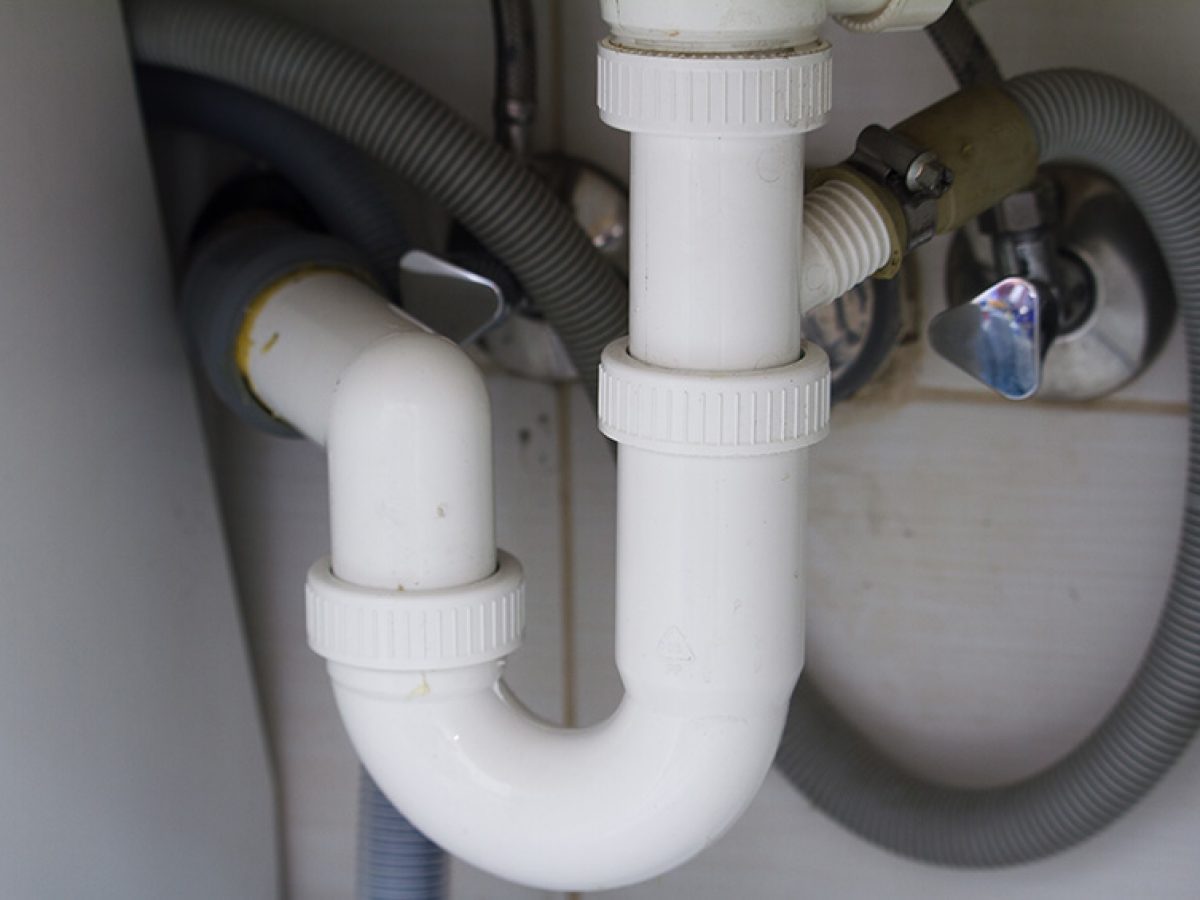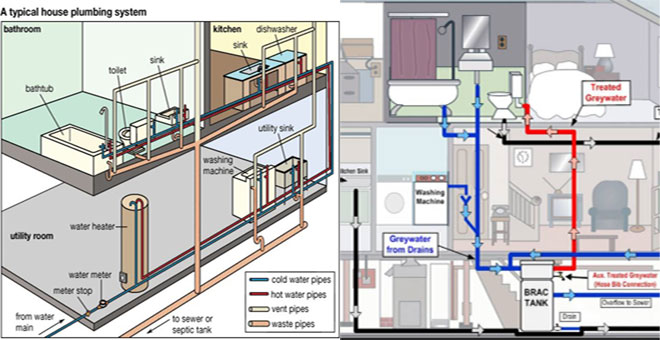Were you in search of details involving The Inner Workings of Your Home's Plumbing?

Recognizing just how your home's pipes system functions is necessary for each house owner. From supplying tidy water for alcohol consumption, food preparation, and showering to securely removing wastewater, a well-maintained plumbing system is crucial for your family's health and convenience. In this thorough overview, we'll discover the complex network that comprises your home's plumbing and deal pointers on upkeep, upgrades, and taking care of typical problems.
Introduction
Your home's pipes system is more than simply a network of pipes; it's an intricate system that guarantees you have accessibility to tidy water and reliable wastewater removal. Knowing its components and just how they interact can assist you prevent pricey repairs and make certain whatever runs smoothly.
Standard Parts of a Plumbing System
Pipelines and Tubes
At the heart of your plumbing system are the pipelines and tubing that lug water throughout your home. These can be constructed from various materials such as copper, PVC, or PEX, each with its benefits in terms of durability and cost-effectiveness.
Components: Sinks, Toilets, Showers, etc.
Components like sinks, bathrooms, showers, and tubs are where water is made use of in your house. Understanding just how these fixtures link to the plumbing system aids in identifying problems and preparing upgrades.
Valves and Shut-off Factors
Shutoffs manage the flow of water in your pipes system. Shut-off valves are vital during emergency situations or when you need to make repair services, enabling you to separate parts of the system without interrupting water circulation to the entire home.
Water Supply System
Key Water Line
The main water line links your home to the municipal water system or a private well. It's where water enters your home and is distributed to numerous fixtures.
Water Meter and Stress Regulator
The water meter procedures your water use, while a pressure regulator makes certain that water flows at a secure stress throughout your home's pipes system, avoiding damage to pipelines and components.
Cold Water vs. Warm water Lines
Recognizing the difference between cold water lines, which supply water straight from the main, and warm water lines, which carry heated water from the hot water heater, assists in fixing and preparing for upgrades.
Water drainage System
Drain Pipes Pipes and Traps
Drain pipes bring wastewater far from sinks, showers, and toilets to the drain or septic system. Catches avoid drain gases from entering your home and also trap particles that can cause blockages.
Air flow Pipelines
Air flow pipes allow air into the drain system, protecting against suction that could slow drainage and trigger traps to empty. Appropriate air flow is important for preserving the stability of your plumbing system.
Value of Appropriate Drain
Guaranteeing proper drainage stops backups and water damages. Consistently cleansing drains and preserving traps can stop expensive fixings and extend the life of your pipes system.
Water Heating Unit
Sorts Of Hot Water Heater
Hot water heater can be tankless or conventional tank-style. Tankless heaters warmth water on demand, while storage tanks keep heated water for immediate use.
Just How Water Heaters Attach to the Pipes System
Recognizing just how water heaters connect to both the cold water supply and hot water circulation lines aids in identifying problems like inadequate hot water or leaks.
Upkeep Tips for Water Heaters
Consistently purging your hot water heater to get rid of sediment, checking the temperature level setups, and checking for leakages can extend its life-span and enhance energy efficiency.
Common Plumbing Problems
Leaks and Their Reasons
Leakages can happen as a result of maturing pipes, loose fittings, or high water stress. Dealing with leaks immediately protects against water damages and mold and mildew development.
Blockages and Blockages
Obstructions in drains pipes and toilets are usually triggered by purging non-flushable items or an accumulation of oil and hair. Using drainpipe screens and being mindful of what decreases your drains pipes can protect against obstructions.
Indicators of Pipes Troubles to Expect
Low water stress, slow drains pipes, foul odors, or uncommonly high water costs are indicators of possible pipes problems that need to be dealt with promptly.
Plumbing Upkeep Tips
Regular Examinations and Checks
Set up annual pipes inspections to catch concerns early. Look for indications of leaks, deterioration, or mineral buildup in faucets and showerheads.
Do It Yourself Maintenance Tasks
Basic jobs like cleaning tap aerators, checking for bathroom leakages making use of dye tablets, or insulating subjected pipelines in cold climates can prevent major plumbing problems.
When to Call a Specialist Plumber
Know when a plumbing issue requires expert proficiency. Trying intricate repairs without appropriate expertise can bring about more damage and greater fixing costs.
Upgrading Your Plumbing System
Reasons for Upgrading
Updating to water-efficient components or replacing old pipes can improve water high quality, decrease water bills, and increase the value of your home.
Modern Plumbing Technologies and Their Advantages
Discover modern technologies like clever leakage detectors, water-saving commodes, and energy-efficient hot water heater that can save money and reduce environmental impact.
Expense Considerations and ROI
Calculate the upfront costs versus long-lasting cost savings when thinking about plumbing upgrades. Several upgrades spend for themselves with reduced utility expenses and less repair work.
Ecological Impact and Preservation
Water-Saving Fixtures and Appliances
Installing low-flow taps, showerheads, and commodes can dramatically reduce water usage without sacrificing performance.
Tips for Decreasing Water Usage
Straightforward behaviors like dealing with leakages immediately, taking shorter showers, and running full loads of washing and dishes can preserve water and reduced your utility bills.
Eco-Friendly Pipes Options
Take into consideration lasting pipes products like bamboo for flooring, which is durable and environmentally friendly, or recycled glass for countertops.
Emergency Readiness
Steps to Take Throughout a Plumbing Emergency
Know where your shut-off shutoffs are located and how to switch off the water supply in case of a burst pipe or significant leakage.
Relevance of Having Emergency Situation Contacts Handy
Keep call info for local plumbers or emergency situation services conveniently available for quick response throughout a plumbing situation.
DIY Emergency Situation Fixes (When Suitable).
Momentary repairs like using air duct tape to patch a dripping pipe or positioning a pail under a leaking tap can reduce damages until a specialist plumbing technician gets here.
Conclusion.
Recognizing the anatomy of your home's pipes system empowers you to preserve it efficiently, conserving money and time on repair services. By following normal maintenance regimens and staying notified concerning contemporary pipes technologies, you can guarantee your plumbing system operates successfully for years to find.
HOW YOUR PLUMBING SYSTEM WORKS
Which Pipes Do What?
Blue lines = fresh water supply entering the building
Red lines = hot water supply entering the building
Grey lines = pipes carrying waste away from the building and venting pipes carrying gases away from the building (through the roof)
YOUR MAIN PLUMBING SYSTEMS
There are two main plumbing systems that support your home s basic plumbing needs one that brings clean water into your home, and one that sends dirty water away from your home. Connected to the toilet, bath, shower, and other faucets in your home, these two systems keep your water flowing in the right directions.
ACCESSING FRESH WATER
Fresh and clean water is brought into your home through the main water supply line . Filtered through one pipe, this water is pressured to flow into the various fixtures in your home at any given time.
This water can be sourced from a well located on your property, a pond or river (mostly cottages), or, as in most cases, from the city s municipal water treatment centre. However, it is important to note that water that is untreated, such as the water siphoned from ponds or rivers, may not be safe to drink. Personal water supplies always need to be treated for hardness and contaminants before consumed.
MUNICIPAL WATER SUPPLIES
Improve taste and odour
Remove sediment
Eliminate hardness
Reduce chlorine
COLD WATER SUPPLY VS. HOT WATER SUPPLY
Cold water flows into your home or building through the service line, which then distributes hot or cold water to your fixtures. This line is most commonly run through a central column that runs floor to floor. Hot water runs in short and straight pipes as the longer the pipeline, the more heat that will be lost in the transfer. Having shorter pipes also allows residents to access hot water more quickly.
WASTE WATER SYSTEM
Your wastewater system is divided into two parts pipes that send wastewater away from your home and venting pipes that send sewer gas away from your home. Sewage water travels through pipes that flush the water and waste towards local sewers that are operated and managed by your city or town. Most sewer systems rely on gravity to move the wastewater to where it needs to go.
The further away from your toilet or sink, the larger wastewater pipes become. This allows for waste to be disposed of from various parts of your home or business at once without pipe blockages. The angle and flow of these pipes are also essential for keeping your waste pipes clear of build up.
https://harrisplumbing.ca/how-your-home-plumbing-system-works/

HOW YOUR PLUMBING SYSTEM WORKS
Which Pipes Do What?
YOUR MAIN PLUMBING SYSTEMS
There are two main plumbing systems that support your home s basic plumbing needs one that brings clean water into your home, and one that sends dirty water away from your home. Connected to the toilet, bath, shower, and other faucets in your home, these two systems keep your water flowing in the right directions.
ACCESSING FRESH WATER
Fresh and clean water is brought into your home through the main water supply line . Filtered through one pipe, this water is pressured to flow into the various fixtures in your home at any given time.
This water can be sourced from a well located on your property, a pond or river (mostly cottages), or, as in most cases, from the city s municipal water treatment centre. However, it is important to note that water that is untreated, such as the water siphoned from ponds or rivers, may not be safe to drink. Personal water supplies always need to be treated for hardness and contaminants before consumed.
MUNICIPAL WATER SUPPLIES
COLD WATER SUPPLY VS. HOT WATER SUPPLY
Cold water flows into your home or building through the service line, which then distributes hot or cold water to your fixtures. This line is most commonly run through a central column that runs floor to floor. Hot water runs in short and straight pipes as the longer the pipeline, the more heat that will be lost in the transfer. Having shorter pipes also allows residents to access hot water more quickly.
WASTE WATER SYSTEM
Your wastewater system is divided into two parts pipes that send wastewater away from your home and venting pipes that send sewer gas away from your home. Sewage water travels through pipes that flush the water and waste towards local sewers that are operated and managed by your city or town. Most sewer systems rely on gravity to move the wastewater to where it needs to go.
The further away from your toilet or sink, the larger wastewater pipes become. This allows for waste to be disposed of from various parts of your home or business at once without pipe blockages. The angle and flow of these pipes are also essential for keeping your waste pipes clear of build up.
https://harrisplumbing.ca/how-your-home-plumbing-system-works/
As a passionate person who reads on Anatomy of a House: Understanding the Components, I assumed sharing that section was valuable. Sharing is caring. Helping others is fun. Thank you for being here. Please check up our site back soon.
Go Services